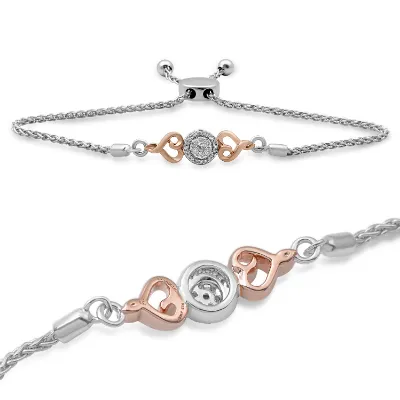How Renaissance became the crown jewel of India’s gems and jewellery exports
As the disposable income of the Indian middle class rises, along with increasing consumer spending on lifestyle products, the demand for gems and jewellery is also rising. The sector contributes to around seven percent of the country’s GDP and 15 percent of India’s total merchandise exports, according to Indian Brand Equity Foundation data.
The industry has more than 300,000 players in India, and most of them are small businesses. However, there are also large brands that have made a name for themselves globally through their extensive product lines and aggressive marketing.
One such popular name is Renaissance Jewellery, which employees over 4,000 skilled workers and has a production capacity of 2.5 million pieces of jewellery per annum. The word ‘renaissance’, which means ‘rebirth’, was used when entrepreneur Sumit Shah revamped his father’s diamond cutting business and set up the company in 1995.
“In 1970, my father Niranjan Shah had started a diamond cutting business. But when Renaissance was launched in 1995, we stopped diamond cutting and started manufacturing jewellery since we wanted to enter this big market,” says Sumit Shah, Founder and Managing Director, Renaissance Jewellery.

Sumit Shah, Founder and Director, Renaissance Jewellery
His father is still the Chairman of the company, and under Sumit’s leadership, the brand has become a stalwart in india’s gems and jewellery sector. The Rs 1,800 crore company is headquartered in the Special Electronics Export Processing Zone (SEEPZ), Mumbai, and has subsidiaries in the US, UK, and Dubai.
In an exclusive interaction with SMBStory, Sumit reveals more about the business and his plans for the future.
SMBStory: Can you tell us more about Renaissance?
Sumit Shah: We are into designing, manufacturing, and sale of jewellery to global retailers. Renaissance Jewellery Limited (RJL) has been the largest exporter of studded jewellery from India to leading jewellery retailers in the world. We have a strong 150-member product development team spread across the US, UK, Dubai and Mumbai.
We also have nine state-of-the-art manufacturing facilities, employing 4,000 people globally. We own exclusive licenses for two brands, namely ‘Enchanted Disney Fine Jewelry’ and ‘Hallmark’. We plan to enter new territories like China and Europe with the Enchanted Disney Fine Jewellery brand, which has been a huge success in the US.

A Renaissance Jewellery necklace piece
SMBS: Who makes up the leadership team of RJL?
SS: My father Niranjan Shah, who is the Chairman, has been associated with the company since its inception. He has over four decades of experience in the gems and jewellery industry. He is currently responsible for the overall strategic planning and decision making for the company.
I work closely with him, and my areas of focus include strategy formulation and new business initiatives. I helped transform RJL from being a contract manufacturer of jewellery to a design house serving global retailers, and established an international marketing network. The third member is Hitesh Shah, who is responsible for finance, accounting and merchandising operations for the company. He has 22 years of experience in the jewellery business.
SMBS: Under your leadership, how did RJL diversify into so many categories?
SS: We were primarily a manufacturer of diamond fashion studded jewellery. In 2013, we acquired the business assets of Jewel America, an entity specialised in the gemstone business in the US. This paved the way for entering the gemstone business. The acquisition also enabled cross-selling gemstone products to our current studded jewellery retailers in the US.
In 2016, we chose to enter the gold manufacturing business in Dubai by acquiring the business assets of Vogue DMCC. With changing dynamics in the jewellery business, we also entered the branded jewellery space with ‘Hallmark’ and ‘Enchanted Disney Fine Jewelry’. With our extensive product catalogue, we also have a significant online presence through our own website in the US, apart from a strong presence on Amazon and other major ecommerce marketplaces.
SMBS: What were some of the key milestones in your journey?
SS: Initially, we invested our own money and began manufacturing studded jewellery in 1995. Between 2000 and 2005, we acquired a 40,000 square foot facility in Mumbai, commenced business with Walmart and Zales, and setup a unit in Gujarat. In the next four years, we started setting up subsidiaries in the US and UK. In 2007, we went for a Rs 80 crore IPO and got listed on the BSE and NSE.
We then acquired business assets of Jewel America in 2013 to enter the gemstone business. Then we acquired Vogue DMC and Jay Gems, and we recently signed a licensing agreement with Hallmark. With this, our earnings before interest, tax, depreciation and amortisation crossed Rs 100 crore.
SMBS: What is the market size of your sector, and how is RJL differentiating from its competition?
SS: The current market size of the jewellery business is around $80 billion, and it is expected to remain constant in the near future. However, we expect that within this market, branded jewellery is going to see a pretty decent growth with a reduction in the generic jewellery business.
Therefore, our key product differentiation comes through branded jewellery. Our popular brands and our product development efficiencies give us an edge in terms of designing branded jewellery. We expect to introduce these brands in other markets like China and Europe to expand our branded jewellery play, and thereby improve our gross margins and return on equity in the next financial year.

Renaissance is headquartered in the Special Electronics Export Processing Zone (SEEPZ), Mumbai
SMBS: What are your challenges in sustaining and growing the business?
SS: The flat nature of the yield curve hints towards recession in the near future. Moreover, lacklustre market expectations might dampen the demand for luxury goods like jewellery in the next financial year.
However, the US-China trade war can have a favourable impact on the jewellery manufacturing business in India. Currently, there are no sanctions on the jewellery exports. If the jewellery exports to the US are included in these sanctions, production might shift from China to India, which would be very favourable for the jewellery business in India.
Further, lab-grown diamonds have already been introduced by major retailers in the US. Currently, they are in the testing phase. However, the initial response from customers has been positive. If the popularity of these diamonds increases, there might be demand shrinkage for low quality diamonds
SMBS: What is your advice to people who want to set up their business in the same sector?
SS: I firmly believe that product differentiation and innovation are the keys to success. The jewellery business is capital-intensive and fixed assets-light. Tight control on inventory management and accounts receivables are the most critical areas for management.
ALSO READ:
Noble Jewels aims to strike gold by going digital with its custom-made jewellery
‘International trade fairs are too expensive for jewellers,’ says Devang Desai of India Trading







